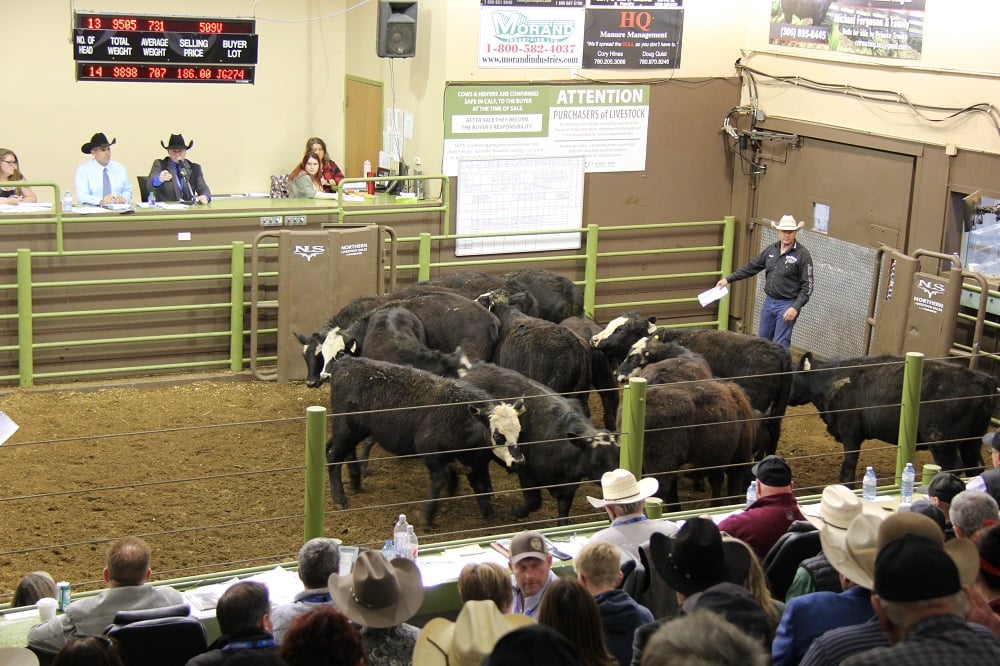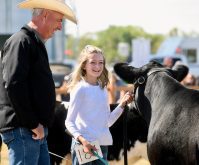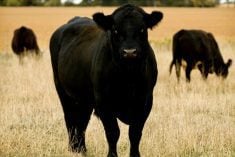Fed cattle
After months of mostly steady fed cattle prices, the market dipped in mid-November in response to negative packer margins, large volumes of contract cattle limiting cash trade and slower beef movement. The November 10 fed steer average at $230.89/cwt is 25 per cent or $47/cwt higher than the same week in 2022. When compared to the five-year average, the fed cash price is $78/cwt higher. Basis levels remain historically wide, as the November 10 cash-to-cash basis is -$18.21/cwt.
Beef demand has been resilient to inflation for the most part, but recent weeks have seen a pullback as household expenses continue to increase. A bearish U.S. cattle-on-feed report in October pressured future markets significantly lower at the end of the month. In Canada, the most recent on-feed data released just days ago reported the total number of cattle on feed on November 1 was 1,098,609 head, which is still three per cent larger than a year ago and 10 per cent larger than the five-year average. Feeder placements in October were three per cent lower than a year ago. However, only accounting for cattle placed in finishing lots in Alberta and Saskatchewan, the report analysis also referred to speculation of increased background lot placements. Finishing lot placements in Canada over the past five months are near record large which changes the supply picture in 2024. Smaller numbers are still expected in 2024. However, the timing of market-ready supply will be adjusted from what is typically expected.
Read Also

Cattle Market Summary
Break-evens, cow and calf prices, plus market summaries courtesy of Canfax and Beef Farmers of Ontario. Cost of Production September…
Weekly fed steer slaughter at the start of November was down 20 per cent when compared to the same week’s total in 2022 while fed heifer slaughter was 49 per cent larger than the same week. Cumulative data for 2023 reports that fed steer slaughter is down eight per cent for the year at 1,401,164 head while heifer kill is four per cent smaller at 819,979 head. Fed cattle exports to the end of October, including cows, are one per cent under last year at 397,715 head.
Deb’s outlook on fed cattle: A historically weak cash basis may spur U.S. interest. However, the state of the economy and the higher cost of living may continue to hinder fed cattle pricing. The fed cattle market in the near term will be volatile. It’s advisable to watch both cattle fundamentals and external market factors. Favourably, the number of market-ready fed cattle will tighten at the end of 2023. The holiday season generally increases middle meat movement but to what extent and how quickly the market responds is uncertain.
Feeder cattle
Lower live cattle and feeder futures pressured the feeder market. Feeder cattle prices are still well above last year and at record-high fall levels but have dipped to the lowest averages since July. The 550-lb. feeder market has seen large volumes move. In mid-November, the average price was at $385.61/cwt which was down $16.18/cwt from the fall high set in September but still $118.02/cwt higher than the same time in 2022. Heifer calves in the same weight class traded $54.50 back from the steers. While the steers have lost $16.18/cwt from the fall peak, the heifers traded $32/cwt lower than the fall high.
Heavier feeder cattle are also down $16/cwt from the high. Hitting $313.30/cwt on November 10, they were trading $83/cwt higher than the same week a year ago. In the first couple of weeks of November, the 850-lb. feeder basis narrowed from -$21.15/cwt to -$2.85/cwt.
The wide basis in October encouraged increased feeder exports. Annual exports to the end of October totalled 147,789 head which is down 16 per cent from 2022. However, the monthly exports in October were up 140 per cent when compared to October 2022.
Deb’s outlook on feeder cattle: In the near term, price pressure may persist on many weight classes. Feedlot pen space is limited and forward-sold calves are entering lots, using trucks and labour. In addition, technical markets are lower and the cash-fed market is sluggish. A lower dollar will encourage exports and keep a floor on the market. In addition, the lower cost of gain in 2023 will continue to support the feeder market. Looking further out, supplies of cattle in North America are still tight. The fall run has increased numbers looking for bunk space right now but in the coming weeks auction numbers will slow and many classes of feeder cattle should stabilize and improve.
Non-fed cattle
In general, the fall run increases cow volumes. However, the fall of 2023 has seen additional cows come to town as producers struggle with limited winter forage.
As supply continues to outpace demand, D1,2 cow prices have moved seasonally lower. The D1,2 cow low in October was $130.61/cwt which rebounded back up to $138.07/cwt in early November. Even as prices hover near fall lows, cows are still trading at record-high levels. In mid-November, D1,2 cows lost some ground again, averaging $133.94/cwt on November 10. At that price, the market was $44.15/cwt higher than a year ago and $57/cwt above the five-year average.
Canadian cow slaughter to the end of October 2023 was up nine per cent from a year ago at 411,945 head while bull slaughter was 27 per cent larger than the same period last year at 16,388 head.
Butcher bull prices dipped to an average of $152.78/cwt (as of November 10). That is $30/ cwt higher than the same time last year. Bull exports to the end of October totalled just 665 head in 2023 which is down 18 per cent from a year ago.
Deb’s outlook on non-fed cattle: D1,2 cow availability will slow in the coming weeks. Most cow-calf producers have weaned calves and made culling decisions already. As fed cattle numbers tighten and prices stabilize, cows should also start to rebound as the end of 2023 nears.
















